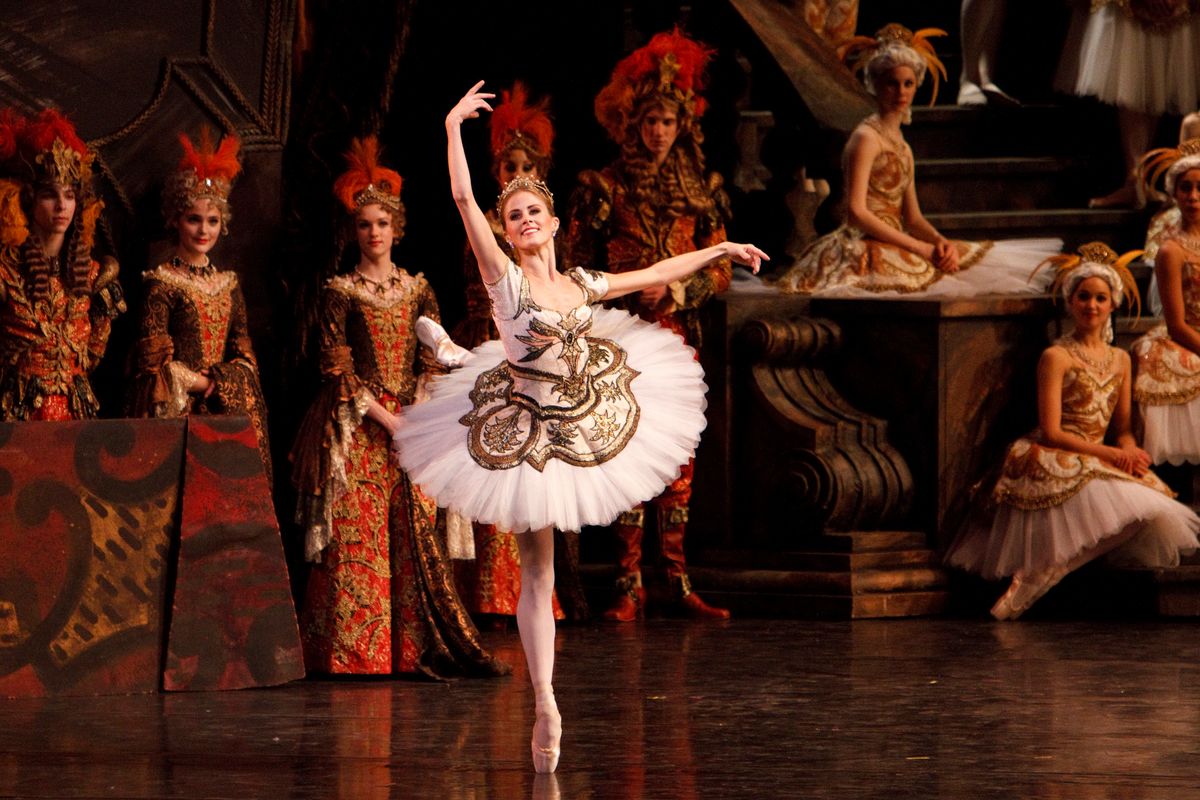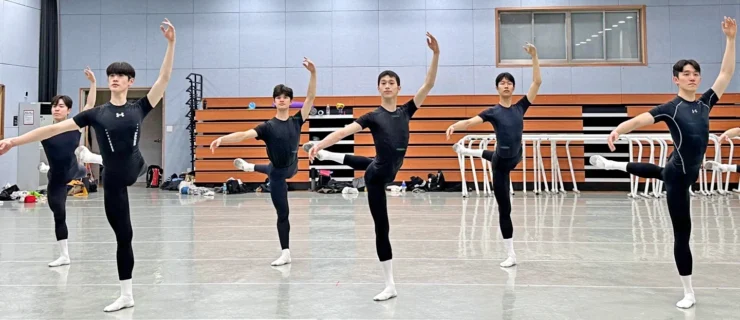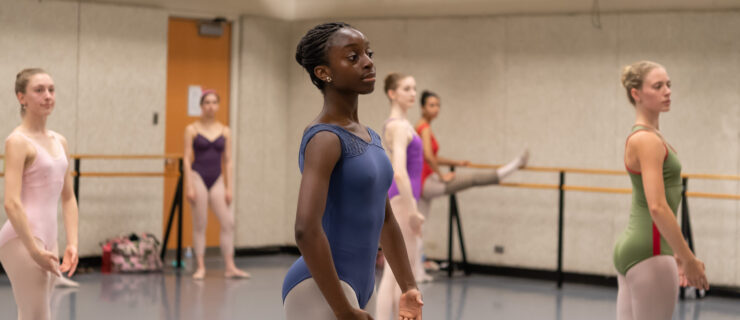Under Pressure: Is It Possible to Join a Company Without High-Profile Training Credentials?
All photos by Angela Sterling for Pointe
When National Ballet of Canada principal Heather Ogden was in high school, she earned a spot at Royal Winnipeg Ballet School’s year-round program. She had loved their summer intensive and knew she wanted to dance professionally—but she also knew that she wasn’t ready to leave home. “I was reluctant to leave my family,” she says. “It was a hard decision, but I knew I was getting really good training at home.” She took a chance and stayed at her home studio, Richmond Academy of Dance in British Columbia, until she graduated high school and auditioned for NBoC.
These days, many promising ballet students leave home for professional schools, hire personal coaches and jet from one competition to another. Those who lack the financial means for such training, or aren’t ready (or allowed) to leave home yet, may feel they have no chance at making it professionally. Pointe investigated four training “disadvantages” in today’s high-profile world. Here’s how to make sure you’re still on track for a career.
1. I train at my local studio.
With the ever-increasing demand for versatile training, it’s hard to get the necessary depth and variety of study at home, which is why moving away to attend a conservatory or company school is so appealing. They provide extensive classes in partnering, contemporary, character and pointe, as well as performance experience. Students dance alongside their more advanced peers, and have exposure to artistic directors and choreographers.
But at auditions, it’s not the name of your school that wins you the contract. “The bottom line is, we pick the dancers that we think are the best dancers,” says Victoria Morgan, artistic director of Cincinnati Ballet. “It doesn’t matter if you trained in Timbuktu.” Joffrey Ballet artistic director Ashley Wheater agrees: “I see kids that have been to some top schools, and something is missing from their training. Then I see kids with beautiful training, and I’ve never heard of their school.”
That said, dancers who study locally must be brutally honest about the quality and versatility of their training. Perhaps there aren’t boys to partner with, or few opportunities to learn different styles and genres. It’s up to you to supplement your training by seeking out classes, workshops and summer programs to complete a well-rounded dance education. Start by finding the best technical training in your area. (For some, this may mean taking classes at more than one studio.) Wheater recommends researching examples of school syllabi online and modeling your own training after one or two that align with your goals.
And don’t forget to embrace the benefits of your home studio. For Ogden, this meant more stage time than some of her peers at boarding schools received. For Ballet San Jose dancer Nicole Larson, who trained locally at the Naples Dance Conservatory, the biggest benefit was the one-on-one attention she received.
2. I go to a regular high school.
 Heather Larson and Alex Kramer in Jessica Lang’s Eighty One. Photo by Alejandro Gomez, Courtesy Ballet San Jose Silicon Valley.
Heather Larson and Alex Kramer in Jessica Lang’s Eighty One. Photo by Alejandro Gomez, Courtesy Ballet San Jose Silicon Valley.
Many pre-professional dancers forgo traditional high school in favor of online study. The impetus here is legitimate: Online school is flexible, often free and takes less time in the day than regular high school, leaving more time for pre-professional training. But it also means giving up that traditional high school experience.
The decision here doesn’t have to be all-or-nothing. Ogden, for instance, attended a normal high school, but she made a special arrangement to receive credit for her dance training. She left school early before the last class period, arriving at her studio in time for an extra technique class. “I did a few ballet projects to receive those credits for art or P.E.,” she says.
Larson also attended a full-time high school and enjoyed having a life outside of ballet. She and Ogden agree that having non-dance friends is one of the benefits, though it’s hard to find time to socialize when you’re headed to rehearsal. “When your friends want to go to a football game or the movies and you have ballet—that was difficult,” says Larson. “I really tried to stay focused, because I knew I didn’t want to do anything else.”
3. I don’t compete.
Ballet competitions can be a controversial topic, but when approached the right way, they can be beneficial. Beyond the exposure and potential for resumé-boosting medals and scholarships, they allow students to learn how to perform under pressure, build confidence onstage and receive individualized feedback.
If you don’t have the means to participate in high-profile competitions, and you have a strong desire to do so, Wheater recommends setting up a student showcase at your home studio, where each student will perform variations for a panel of teachers who write personalized feedback. “Even if you don’t have the resources to compete, you can still have an evaluation system where you’re able to be really objective throughout the year on what you need to work on,” he says. Shelly Power, academy director at Houston Ballet Academy, also recommends attending nearby competitions as an audience member to learn more about the talent in your area and how you fit in. To gain experience outside of your comfort zone, make a regular practice of going to master classes in neighboring towns.
4. I don’t have a private coach.
Personalized feedback is vital to any aspiring dancer, but this doesn’t necessarily require hiring a private coach, which is often expensive. For Larson, her classes were small already, and she was even able to schedule individual sessions right at her home studio. At large schools, on the other hand, formally scheduled private lessons may be hugely beneficial.
If you’re looking for more individualized feedback but don’t have the funds for weekly private lessons with a star teacher, Morgan recommends contacting the company manager of your local professional ballet company. One of the company dancers may be willing to coach you and teach you repertoire for a reduced rate, especially during the off-season.
Gaining Exposure
At auditions, the big advantage your competitors have is exposure—so as you train, and especially during your last year, it’s up to you to be seen by everyone you can. Summer intensives are one of the best ways to meet teachers, choreographers and directors. Many offer scholarships and need-based financial aid. For Larson, her first professional opportunity came through a summer intensive with Milwaukee Ballet; at the program’s end, she was invited to join Milwaukee Ballet II. “That was what got my foot in the door,” she says.
Morgan notes that less exposed dancers should focus on building relationships. “It’s good to see someone multiple times,” she says of those who attend summer intensives and company auditions more than once. Directors may feel more comfortable offering a contract to someone if they gain an idea of the dancer’s consistency and personality.
Now’s the time to make your connections work for you—and you might be better connected than you realize. “There’s the saying, ‘six degrees of separation.’ Well, in the ballet world it’s probably two,” says Morgan. “Your teacher probably knows somebody who knows somebody.” For instance, during Ogden’s senior year, her teacher, a former professional dancer, recommended her to NBoC, and she was invited to audition. At 17, fresh out of her home studio, her career began. “I was less exposed, for sure,” says Ogden. “But I had a lot of support.”





